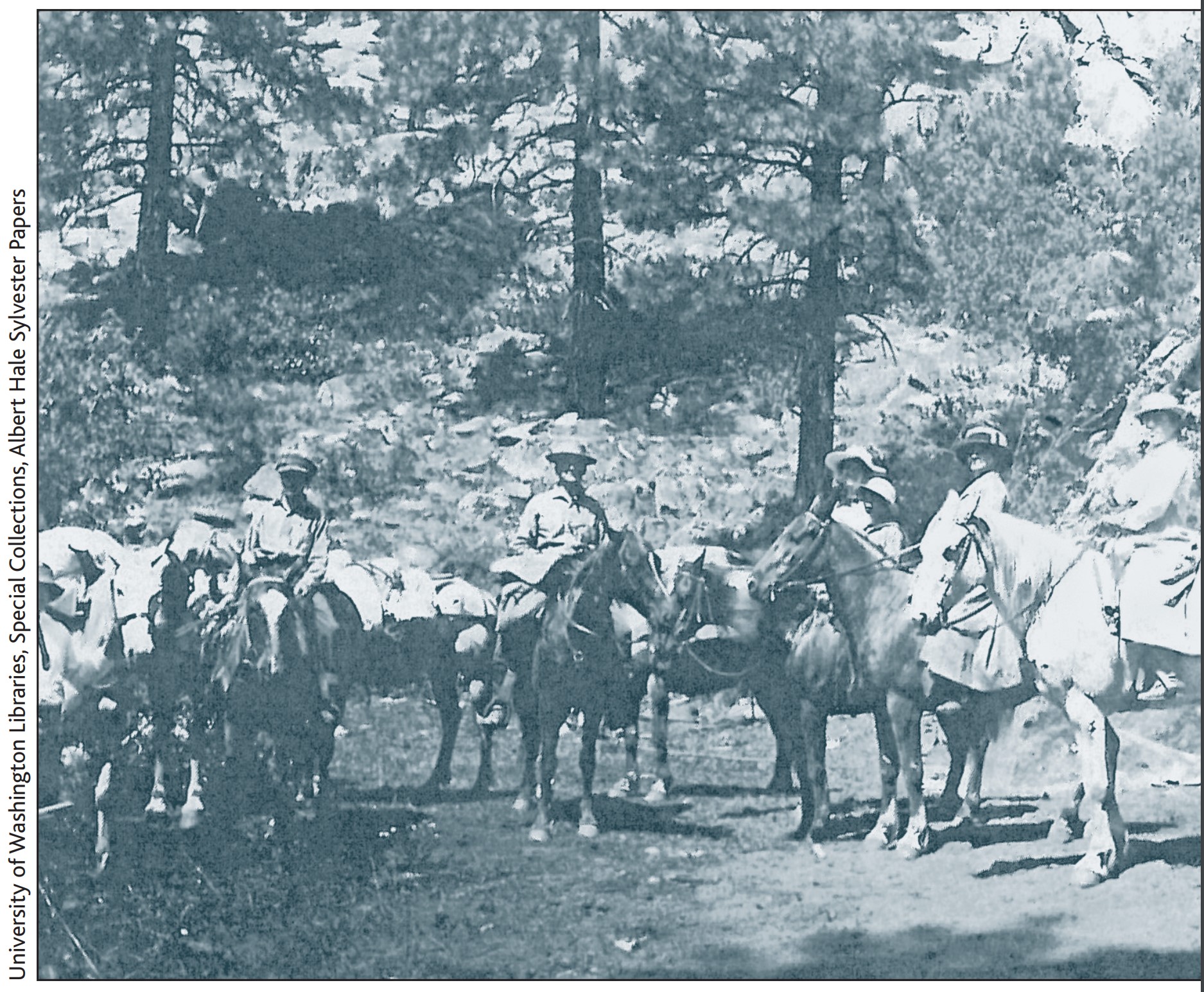A PCT hiker anywhere north of Snoqualmie Pass is seeing placenames on the map that come from native tribes, or early settlers miners or shepards. But a very large number of those placenames come from Albert Hale Sylvester and his crew of rangers.
He named many PCT features such as Overcoat Peak (where he left a new but too-small overcoat buttoned around the cairn he built there), Cathedral Peak, Josephine Lake, Lake Susan Jane, Lake Valhalla (where he read Norse mythology), Heather Lake, Pear Lake, Peach Lake, Dishpan Gap (where an old rusty dishpan was found), Kodak Peak (where a camera was lost), Indian Pass (a route well-traveled by natives), Lake Sally Anne, and many more. He even named Klone Peak after his dog Klone. Albert Hale Sylvester was a topographer for the US Geological Survey in the Snoqualmie Ranger District between 1897 and 1907. Then, from 1908 to 1931, he served the US Forest Service as the first forest supervisor of Wenatchee National Forest. His work involved the first detailed surveying and mapping of large portions of the Cascade Range in Washington, over the course of which he gave names to over 1,000 natural features.
He tried first to use Indian names or names already locally established. When he could find none, he would choose a name to put on the map. The surveying work often required placing cairns and other survey targets on top of mountains. He made the first ascents of a number of mountains in Washington. In 1916 he summited Mount Stuart.

He encountered an Indian at Walupt Lake who informed him of the name of the lake. Something I learned from his memoirs was that the Indians on the west side of the mountains ended their river names with the suffix "-ish". On the east side the Yakima used the "-eum" suffix, and the Wenatchee used "-qua" (The Entiat river was originally Entiatqua "grassy water", the Columbia was originally Umpqua "big water", and the Wenatchee River was originally Napequa "white water".)
Previously unknown to non-indigenous people, Sylvester discovered, explored, and named The Enchantments. While he was Wenatchee Forest district supervisor he came across the unmapped alpine lakes. In a letter, he described camping between two fine lakes in the Mount Stuart Range, the Snow Lakes. "I camped between them overnight and the next morning went on up the creek to see what I could see. There I found five or six most beautiful small lakes grouped in a wonderful little glacial valley all ringed with alpine larch. From the highest up over an entrancing fall tumbled the water it received from a glacier. It was an enchanting scene." The lakes did not appear on the Mount Stuart Quadrangle map so he named the group Enchantment Lakes.
In 1944, while leading a party of friends to one of his favorite parts of the mountains, the Chiwaukum Mountains, one of their horses fell and died at Deadhorse pass above Cup Lake. Two days later, on that same trip, Sylvester was mortally wounded on the slope of Ladies Peak, just north of Ladies Pass when his horse panicked and lost his footing on a steep and rocky slope. The accident occurred just one mile N/NE of the lake he'd named for his wife, Lake Alice. In his honor, the lake less than a mile south of Lake Alice was named Lake Sylvester.
A look at the map and you will see that he named lakes all around Ladies Peak with the names of women he or his rangers knew; Grace, Florence, Margaret, Flora, Mary, Edna, Augusta, Ida, Lorraine, Victoria, etc.
He once wrote that of all the many places he had explored and visited in the Cascades he thought the most beautiful was the Buck Creek area, near Buck Creek Pass (due east of Glacier Peak). In his official role, he closed Buck Creek Pass to grazing.
His complete records can be found in the University of Washington Libraries, Special Collections (https://www.npshistory.com/.../okanogan.../c-v27n1-2013.pdf)